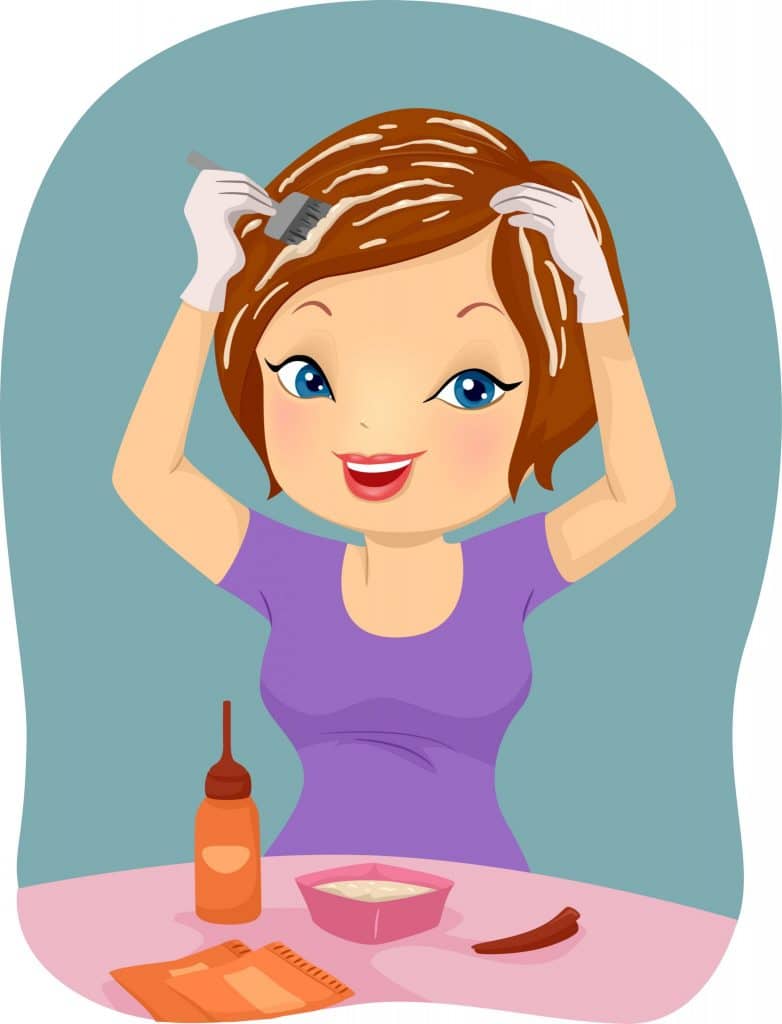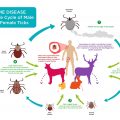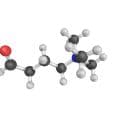Toxic chemical haircare and hair dye (shocking facts!)
In this post you will learn more about :
- Are the Toxic chemical beauty ingredients in your hair care products making you TOX-SICK?
- The shocking facts about commercial toxic chemicals haircare products
- How toxic chemical haircare products affect our health. Read the shocking facts.
- Toxic chemicals found in commercial hair dye
- Your commercial hair dye may also contain lead.
- Ditch Toxic Chemical haircare products
- The dangers of Toxic chemical hair dye!
- Commerical Hair dye Increases Cancer Risk in Adults.
- Toxic chemical haircare ingredients
 Are the Toxic chemical beauty ingredients in your hair care products making you TOX-SICK?
Are the Toxic chemical beauty ingredients in your hair care products making you TOX-SICK?
Toxic chemical hair care is a big problem for our health and for our environment.
These days haircare products and beauty products are full of toxic chemical beauty ingredients to avoid. Nature provides us with so many wonderful raw oils, herbs, botanicals and essential oils. Many kinds of butter are also beneficial to your skin and hair. So, you don’t necessarily need to expose yourself to harmful, toxic ingredients.
According to David Suzuki Foundation, a science-based environmental organization headquartered in Vancouver, 1 in 8 of the 82,000 ingredients used in health and beauty care products are industrial chemicals.
Unless you want to absorb carcinogens, pesticides, reproductive toxins and hormone disruptors daily, it’s important to remember that natural is the KEY if you don’t want to get TOX-SICK. As you can imagine, industrial chemicals harm the environment and alter your health as well. As a consequence, this leads to auto-immune diseases caused by inflammation in the body.
Our beauty care products are full of toxic chemical ingredients that make us sick and tired. So it is best to avoid them.
The shocking facts about commercial toxic chemicals haircare products
The toxic chemical haircare facts are on the rise! The toxic chemicals found in commercial hair care and hair dyes are shocking for our health. Scientist in The National Cancer Institute (NCI) have conducted experiments that found that over 5,000 different toxic chemicals in hair dye products. Some of which are reported to be carcinogenic (cancer-causing) in animals. As you dye your hair, you breathe in toxic fumes and chemicals which are absorbed into your body via your scalp.
Other recent studies have found a link between hair dyes and increased risk of bladder cancers for hairdressers. Potentially because of the chemicals found in hair dye. Other recent studies have found a link between the use of commercial hair dyes and the increased risk of leukaemia and non-Hodgkin lymphoma. Research is ongoing.
Although manufacturers have improved commercial hair dye products, most still contain toxic chemicals haircare ingredients like:
Quaternium-15 – which can release formaldehyde (a known carcinogen)
Alkylphenol ethoxylates (APEs) – which may be a hormone disruptor
Phenylenediamine (PPD) – which is a skin and respiratory irritant and has been classified in the European Union as toxic and dangerous to the environment.
How toxic chemical haircare products affect our health. Read the shocking facts.
There are not enough studies to know how colouring our hair at least 6-10 times a year affects our health. Most likely—unless we’re hairdressers who deal with high exposures or we colour more frequently than usual—the effects will be negligible. But that doesn’t change the fact that these chemicals are seeping into our scalps (not forgetting the toll the creation and disposal of these chemicals take on the environment).
Recent studies have found a link between the use of commercial hair dyes and rheumatoid arthritis (RA). This condition is a painful, chronic illness that disfigures people and halts their physical abilities. Although RA relates to seniors, younger individuals who regularly dye their hair suffer from it too. The studies I read about commercial hair dye are shocking.
Toxic chemicals found in commercial hair dye
An extremely toxic chemical found in most commercial hair dyes is para-phenylenediamine (don’t ask me to pronounce it!) This highly toxic chemical causes methemoglobinemia (can’t pronounce that either!) which restricts oxygen and causes the skin to turn a bluish/grey colour. Methemoglobinemia is a dangerous condition. Instantly address it if you suspect that you have it.
Your commercial hair dye may also contain lead.
Further, lead is frequently used in hair dye. It seems unimaginable since the scientific community has told us for years that lead is deadly, but the darker your hair dye, the more likely it is to contain lead. Also, look for the word ‘acetate’ in the list of ingredients and avoid it at all costs. It seems unimaginable since the scientific community has told us for years that lead is deadly, but the darker your hair dye, the more likely it is to contain it. Look for the word ‘acetate’ in the list of ingredients and avoid it at all costs.
If you’re pregnant, avoid dyeing your hair. A growing foetus is vulnerable at any stage, so it’s not worth the risk. Everything that you consume, whether orally or through the skin, trickles down to your unborn baby and chemicals can have a devastating effect on them. Most noteworthy, leukaemia frequently links to chemicals in hair dyes.
Ditch Toxic Chemical haircare products
Cancer rates are on the rise. This fact is not surprising since nowadays we’re bombarded by chemicals in everyday products, including hair dyes. So why not replace your commercial hair dye for a natural, colouring alternative, like henna? This way, you can avoid unnecessary exposure to toxic, cancer-causing chemicals. From today, ditch your toxic chemical dye and use the potent herbal plants and henna instead – these are a great and completely natural and effective way to colour your hair, and I swear by it! Not only do they tint your hair in beautiful intense shades, but it also nourishes, protects, strengthens and adds shine and lustre to your hair. Doesn’t this sound like a great ally helping you combat hair loss? So, what’s stopping you?!
The dangers of Toxic chemical hair dye!
Toxic chemicals are everywhere. Auto-immune diseases are on the rise. Yes, we are using so many dangerous toxic chemicals in our everyday life. Why?
Commercial Hair Dye contains thousands of toxic chemicals! People have been dying their hair for decades, so why the concern? Well, the dirty little industry secret is that commercial hair dyes contain thousands of toxic chemicals. These include cancer-causing ingredients (carcinogens). Recent studies have found a link between the use of commercial hair dyes and rheumatoid arthritis (RA). This condition is a painful, chronic illness that disfigures people and halts their physical abilities.
Commerical Hair dye Increases Cancer Risk in Adults.
Cancer rates are on the rise. This fact doesn’t surprise me, since nowadays we’re bombarded by chemicals in everyday products, including hair dyes. Why not replace your commercial hair dye for a natural, colouring alternative, like henna? This way, you can avoid unnecessary exposure to toxic, cancer-causing chemicals.
Toxic chemical haircare ingredients:
Imidazolidinyl Urea and DMDM Hydantoin (toxic chemical haircare)
Imidazolidinyl Urea and DMDM Hydantoin release formaldehyde (which is the ingredient used by morticians to preserve corpses). In addition, these chemicals are used, along with parabens, to preserve skin, body and hair products. The longer they fester on shelves, the more harmful they become. With time, these toxic compounds release formaldehyde which also irritates the skin and weaken the immune system.
If all this that wasn’t scary enough, these chemicals linked to a myriad of other diseases or health problems. These include allergies, chest pain, chronic fatigue, depression, dizziness, ear infections, headaches, joint pain, loss of sleep, and can even cause cancer. The American Academy of Dermatology also found that they are a primary cause of contact dermatitis.
Polyethene glycol (PEG 12) increases cancer risks (toxic chemical haircare)
This synthetic chemical is found in many cosmetics, cleansers, conditioners, oven cleaners and humectants. It’s also often used as a thickening agent in shampoos as it can dissolve oil and grease build-up on hair. Unfortunately, this is at the cost of stripping hair and skin of natural moisture, so unless you’re regularly deep-frying your hair, chances are you won’t need such harsh toxic chemicals!
Joking aside, some far-reaching effects can result from regularly using this chemical. For instance, PEG links to increasing consumer cancer risks, including breast cancer. This chemical contains petroleum-based ingredients which are thought to be contaminated with ethylene oxide – a human carcinogen.
Toxic chemical Triclosan worrying side-effects such as paralysis and heart problems
Triclosan is a synthetic antibacterial agent. This chemical is found in toothpaste, cosmetics, soap, body washes, hair products, cleaning products, hand sanitizers, plastics and even children’s toys. In fact, it is found in so many everyday products that it’s incredibly hard not to be exposed to it. Triclosan is registered as a pesticide by the Environmental Protection Agency, which means it is highly toxic to most living organisms.
It’s also classified as a chlorophenol, which is in the same class as other cancer-causing chemicals. This toxic chemical has many worrying side effects linked to it; including paralysis, suppression of the immune system, brain haemorrhages, and heart problems. It can also affect our hormones, sexual function and fertility. Recent studies found a link between the use of Triclosan and the disruption of the endocrine system in animals. Other research studies have indicated that this chemical helps create antibiotic-resistant bacteria.
Sodium Lauryl Sulphate (SLS) can remove the protective barrier from your scalp and skin (and baby skin)
SLS is a synthetic ingredient that creates lather and suds in your shampoo – but that’s pretty much the only ‘good’ thing about it. This chemical is corrosive and can remove the protective layer of our skin. This compound is associated with eye irritation, skin rashes, hair loss and liver problems. This chemical should never be applied to your body. Unfortunately, most hair products contain SLS.
Researchers use this toxic chemical on laboratory test subjects to irritate the skin to test out healing products. Most noteworthy, studies have also found that SLS can penetrate into the skin and organs, leading to inflammation. On top of that, SLS can mimic the effect of hormones, which can make the body produce more than needed. This could easily put you at risk of breast or ovarian cancer.
Engine degreasers, garage car floor cleaners and industrial detergents contain SLS, yet we trustfully place this poison on our hair! SLS is super toxic to the environment.
ISOPROPYL ALCOHOL used in antifreeze and wood finishes, but applying on our skin? (toxic chemical haircare)
You should avoid the ingredient isopropyl alcohol at all costs. In fact, avoid any skin and hair care products that contain alcohol. These chemicals dry out skin and hair; they simply aren’t good for the body.
Did you know that isopropyl alcohol is a key ingredient in antifreeze, shellac and wood finishes? This type of alcohol is used to dissolve oils, so when used on hair, it strips it of its moisture. Most hair gels, volumizers, hairsprays and root lifters use alcohol to hold hairstyles in place, but it’s at the risk of hair breakage. “Consumer’s Dictionary warns that inhaling or ingesting alcohol may cause a stream of negative conditions: headaches, flushing, dizziness, mental depression, nausea, vomiting, narcosis and even coma. “
Toxic chemical haircare: Dimethicone
This is what chemists like to call a silicon-based synthetic polymer. This silicone oil is extremely popular in beauty products as an anti-foaming agent, skin protectant, and skin. Dimethicone also coats the hair (or skin) and seals in moisture by forming a barrier over the skin.
However, it does this so well that it doesn’t allow the skin to breathe or regulate temperature. This is what irritates the skin, hair follicles, shedding, sebum, impurities and skin acne.
METHYLISOTHIAZOLINONE (MIT)
My mantra is, if you can’t pronounce it, don’t use it! And that couldn’t be truer for this preservative which, when exposed to lab rats for just ten minutes, caused brain damage.
Many beauty manufacturers use MIT as a preservative in products like shampoo. It allows them to last for years on the shelf and in your bathroom cabinets without becoming contaminated with unwanted bacteria, bugs and fungi.
You can also find it, in lower concentrations, in hair colours, body washes, laundry detergents, bubble bath and dishwashing soaps.
This toxic chemical is a powerful biocide.
This ingredient is also a powerful biocide, which means that it can control or kill harmful microorganisms.
The more sinister side of MIT came to light when researchers tested the toxic chemical on lab rats. As mentioned above, the researchers found that MIT caused damage to their brain cells. They said: “brief exposure to methylisothiazolinone, a widely used industrial and household biocide, is highly toxic to cultured neurones…”
PARABENS
By now, most of us have heard of parabens, methylparaben and propylparaben. These are toxic and carcinogenic (cancer-causing), almost every commercial beauty product use them.
They cause immune problems, mimic the hormone oestrogen and can stimulate allergies and heavily irritate the skin. In addition, they are linked to cancer, skin irritation and reproductive problems. On labels, parabens can be identified by words like butylparaben, ethylparaben and methylparaben.
In 2003, the European Union banned the use of parabens after studies linked it to breast cancer. A study, conducted by the Journal of Applied Toxicology in 2004, also found that 18 of 20 malignant breast tumours showed a high concentration of parabens, which are known to mimic oestrogen and affect the growth of breast tissue.
PHTHALATES
Many nail polish, makeup products and deodorant use Phthalates as a preservative. This chemical is thought to mimic the effect of hormones which could potentially cause endocrine disruptions. A study by the University of Maryland also found that exposure to phthalates could cause reproductive abnormalities, a decrease of testosterone in males and issues with male fertility.
Other harmful effects of phthalates include: infertility, decreased sperm count, breast cancer, endometriosis, prostate cancer, ovarian cancer, asthma, allergies and obesity.
DEA (DIETHANOLAMINE), MEA (MONOETHANOLAMINE), TEA (TRIETHANOLAMINE)
These three chemicals can cause havoc with your hormones and can form cancer-causing agents. In fact, research shows that there’s a strong link to liver and kidney cancer. Shampoos, soaps, bubble baths and facial cleansers commonly use this preservative.
FD&C COLOR PIGMENTS
Look at the back of your hair dye box, and you’ll most likely see these artificial colour codes, followed by a colour and number. Most FD&C pigments are made with coal tar, and research shows that almost all of them are carcinogenic (cancer-causing). These synthetic colouring agents can also cause skin, scalp irritations and even oxygen depletion in the blood. These chemicals are so toxic that the pigment FD&C Red #4 is no longer allowed to be used in food because it affects the adrenal glands and bladder.
RESORCINOL
Resorcinol can trigger allergies, irritate the scalp and have devastating effects on your endocrine system. This chemical can cause thyroid dysfunction, affect the central nervous system and alter the adrenal glands.
PARA-PHENYLENEDIAMINE (PPD)
Hair dyes contain a toxic chemical known as Para-Phenylenediamine (PPD). Research that has also shown that PPD leads to cancer when combined with hydrogen peroxide.
HYDROGEN PEROXIDE
Hydrogen peroxide is a substance that is naturally in our bodies in low quantities. Used popularly to bleach the hair. The adverse effects are lasting, and your hair becomes brittle, unattractive and difficult to style.
AMMONIA
Most hair dying processes involve breaking down your natural hair first. Hair cuticles breakdown and remove your natural hair colour and make way for a new shade. Ammonia may burn the skin and irritates lungs.
P-AMINOPHENOL
Would you use a product containing chemicals to kill rats? Hopefully not, so please steer clear of P-Aminophenol! There’s also some evidence that this chemical can lead to organ toxicity, as well as strong evidence of skin toxicity.
ISOPROPYL ALCOHOL
Hair colour, body rubs, hand lotion and aftershave…. and antifreeze frequently use this preservative! Researchers have also found evidence that it can destroy our body’s intestinal flora, which leaves us susceptible to parasites, bugs and auto-immune issues. It can also cause headaches, dizziness, mental depression, nausea and coma.
Ditch the toxic chemical hair care products!
I want to increase awareness of the many toxic chemicals and their dangers that are used in beauty, hair and health care products. Global governments are not placing enough importance into this matter, and I find that worrying.
If you’re sick, tired, and tox-sick from the amounts of toxins we are bombarded with, and if you want to protect you and your family from toxic materials, KEEP READING!




